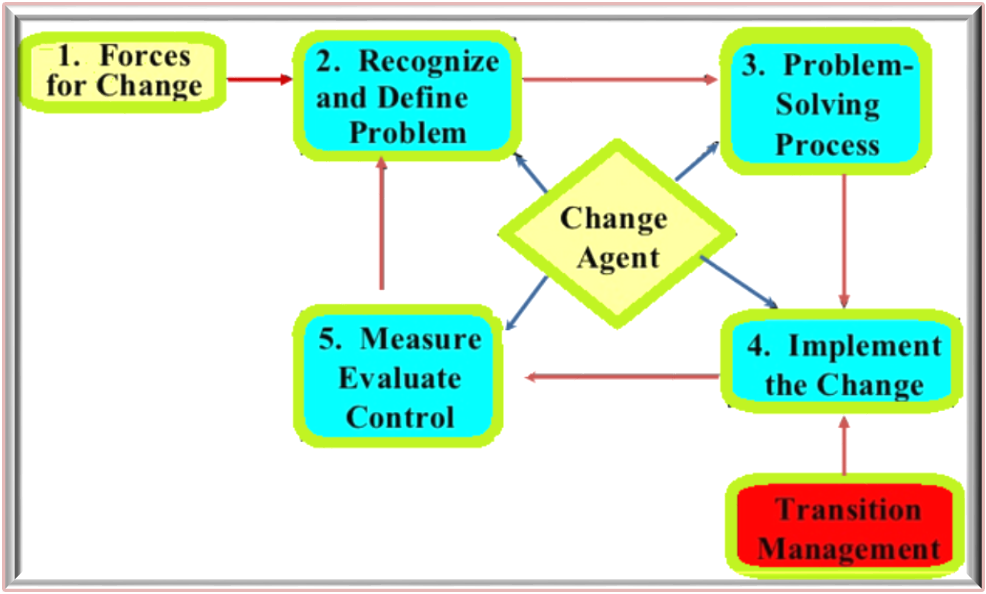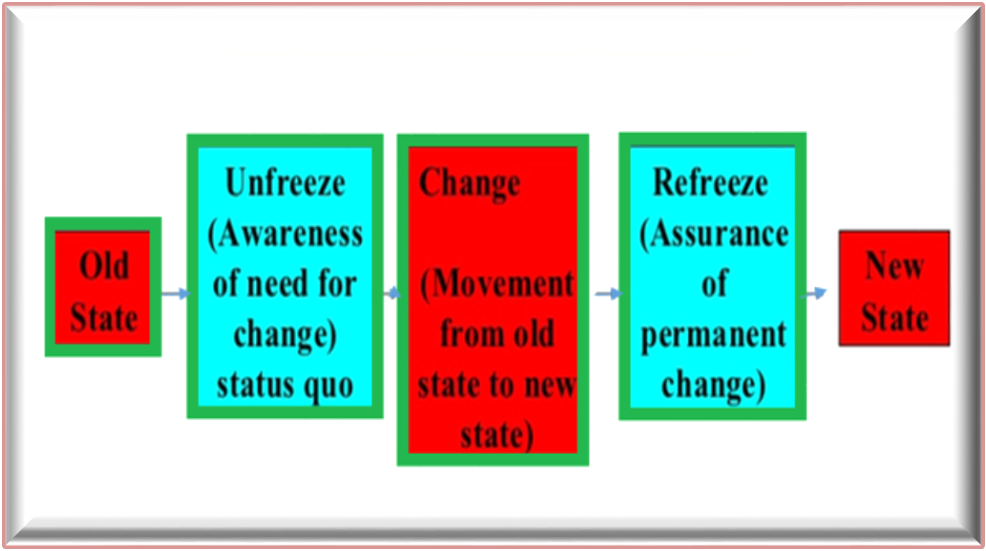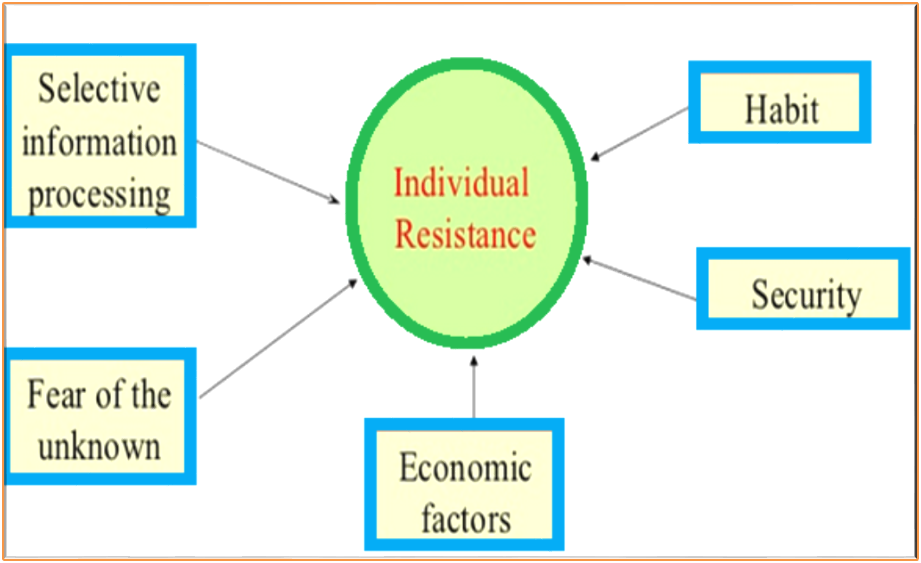Organizational theory and design: Organizational Change and Development (Organisational Behaviour and Design)
In civilized society and business environment, change is continual process. It takes place within world and beyond, in national and global events, in the physical environment, in the way organizations are planned and conduct their business, in political and socio-economic problems and solutions, and in communal customs and values. Organizations must also be cognizant of their holistic nature and of the ways their members affect one another. In current business surroundings, companies undergo changes almost continually if they are to remain competitive. Factors such as globalisation of markets and rapidly evolving technology compel businesses to react in order to survive.
Organizational change: Successful organizational development can help organizations and people to adapt with change. Strategies can be developed to introduce planned change, such as team-building efforts, to improve organizational functioning. Organizational change is an important matter in organizations. Theoretical literature demonstrates that it is really a process in which an organization optimizes performance as it works toward its perfect state. Organizational change occurs as a response to variable business environment, a response to a current disaster situation, or is produced by an organizer. Triumphant organizational change is not just a process of adjustment, but also requires satisfactory managing ability. Other viewpoint of researchers indicated that it is triggered by a progressive manager. Additionally, organizational change is particularly apparent when the organization has just undergone a transfer of managerial power (Haveman, Russo and Meyer, 2001).
Management studies define organizational change as “a state of transition between the current state and a future one, towards which the organization is directed”. Organizational change includes the real content of the change that comes about within these processes. Bulk of theories has shown that organizational change is visible when an organization makes a changeover from its current state to some desired future state. Managing organizational change is the process of planning and implementing change in organizations in such a way as to reduce employee conflict and cost to the organization while concurrently maximizing the effectiveness of the change effort. Besides these two dimensions, the framework in which organizational change appears is equally important, as “in order to devise the content of a strategy, company needs to control both the context in which it happens, as well as the process through which it takes place”.
Continuous Change Process Model
There are numerous reasons for organizational change that vary from a response to internal or environmental pressures, to strategic changes, meant to develop the organization. Most organizational changes are planned, intentional changes, introduced by management. It is established in management studies that organizational changes are easily visible, as they open out in a more systematic, a better structured and a significantly smaller space than social changes. Changes that happen at organization level often develop in a shorter time span than those taking place at a macro level.
In the area of organization change, Kurt Lwin has major contribution. Kurt Lewin developed a change model which is composed of three steps: unfreezing, changing and refreezing. The model represents practical model to recognize the change process. For Lewin, the process of change involves creating the perception that a change is needed, then moving toward the new, desired level of behaviour and finally, solidifying that new behaviour as the norm. The model is still extensively used and serves as the basis for many modern change models.
Lwein’s process model of planned change:
Areas of Organizational Change
Companies often must institute changes in all areas when they attempt to make changes in one. The first area, strategic change, can occur on a large scale when a company shifts its resources to enter a new area of business or on a small scale when a company makes productivity improvements in order to decrease expenditure. There are three basic stages for a company to make a strategic change: 1) realizing that the current strategy is no longer suitable for the company's situation 2) establishing a vision for the company's future direction and 3) implementing the change and setting up new systems to support it. Technological changes are initiated as components of big strategic changes, although they occur on their own. An important feature of changing technology is assessing who will be threatened by the change. A technology change must be integrated into the company's overall systems, and a management structure must be shaped to support it. Structural changes can also happen due to strategic changes when organization decides to obtain another business and must incorporate it as well as due to operational changes or changes in managerial style. People changes can become essential due to other changes, or sometimes companies simply seek to change workforce attitudes and behaviours in order to augment their effectiveness or to stimulate individual or team creative-ness.
Strategies for Implementing Change: Kanter (1983) describes three sets of “basic commodities” or “power tools” of an organization to gain power that include Information (data, technical knowledge, political intelligence, and expertise), resources (funds, materials, staff, time) and Support (endorsement, backing, approval, legitimacy). The first strategy to implement a change in organization is to collect as many of these power tools as possible. As this occurs, individuals can support for the planned change. This is mainly important in helping others see the critical need for the planned change. Another strategy is to “package” the change in a way that makes it less intimidating and, therefore, easier to sell.
Resistance to change: It has been observed that in every major and minor change, there is resistance. Generally, organizations and its members oppose changes. A manager who wants to implement a change whether it is small gets resistance from its employees and other members within the organization. Resistance to change is usual; people have habits and to the status quo. Source of change are individual and organizational. To make changes in organization, managerial actions can reduce or arouse confrontation. People must be stimulated to elude old habits. This must occur in stages rather than suddenly so that "managed change" takes on the spirit of "natural change." Another point is that organization change brings anxieties about the future. If the future after implementing change becomes perceived positive, there will be less resistance. Change symbolizes the unknown. It can lead to failure, the relinquishing or diminishing of one’s span of control and authority, or the possibility of success creating further change. It might be that the planned change has little or no effect on the organization at all. On an individual level, every transition or change effort begins with the end of the current state. The first step toward change goes through the process of ending. Endings must be accepted and managed before individuals can fully embrace the change. William Bridges described the process of individual change (1980) and presented four stages that individuals must pass through in order to move into the transition state and effectively change.
- Disengagement. The individual must make a break with the ‘old’ and with his or her current definition of self.
- Disidentification. After making this break, individuals should loosen their sense of self, so that they recognize that they aren’t who they were before.
- Disenchantment. In this stage, individuals further clear away the ‘old’, challenging assumptions and creating a deeper sense of reality for themselves. They perceive that the old way or old state was just a temporary condition, not an immutable fact of life.
- Disorientation. In this final state, individuals feel lost and confused. It’s not a comfortable state, but a necessary one so that they can then move into the transition state and to a new beginning.

In organizational Resistance, organizations, regardless of size, are composed of individuals. The extent to which individuals within the organization can properly manage change represents the overall organizational capacity for change. Though, there are other factors critical to the organizational surroundings that can act as obstacles to implement change. These include:
- Inertia. One of the most powerful forces that can affect individuals and organizations is inertia. The day-to-day demands of work diminish the urgency of implementing the change effort until it slowly vanishes within the organization.
- Lack of Clear Communication. If information concerning the change is not communicated clearly throughout the organization, individuals will have differing perceptions and expectations of the change.
- Low-Risk Environment. In an organization that does not promote change and tends to punish mistakes, individuals develop a resistance to change, preferring instead to continue in safe, low risk behaviours.
- Lack of Sufficient Resources. If the organization does not have sufficient time, staff, funds, or other resources to fully implement the change, the change efforts will be sabotaged.
These factors can challenge the change effort and create resistance. An intelligent change agent will make efforts to expect and plan to manage resistance. Techniques such as force-field analysis are helpful tools to assist in developing strategies to overcome organizational resistance to change.
Education and communication are main tools to reduce negative reactions. Workers can be informed about both the nature of the change and the reason behind it before it takes place through reports, memos, group presentations, or individual discussions. Another significant step to manage resistance is employee participation and involvement in both the design and implementation phases of the change effort. Organized forms of facilitation and support can be deployed. Managers can make certain that employees will have the resources to bring the change. Managers can make themselves available to provide description and to reduce stress that may arise in numerous situations. Some companies manage to triumph over resistance to change through intervention and rewards. They offer to employees concrete incentives to guarantee their cooperation. Other companies resort to manoeuvring, or using subtle tactics such as giving a resistance leader a top position in the change effort. The last alternative to overcome resistance to change is coercion, which involves compelling people who resist or using force to ensure their cooperation. Though, this method can have negative effects on the company.
Techniques for Managing Change Effectively
In order to effectively manage change, companies must move from its current state to a future desired state at minimal cost to the organization. Major steps in that process are as follows:
- Understanding the current state of the organization: This involves recognizing problems the company faces, assigning a level of importance to each one, and assessing the kinds of changes needed to solve the problems.
- Competently envisioning and laying out the desired future state of the organization: This involves picturing the ideal situation for the company after the change is implemented, conveying this vision clearly to everyone involved in the change effort, and designing a means of transition to the new state. An important part of the transition should be maintaining stability.
- Implementing the change in an orderly manner: This involves managing the transition effectively. It might be helpful to draw up a plan, allocate resources, and appoint a key person to take charge of the change process. The company's leaders should try to generate interest for the change by sharing their goals and vision and acting as role models. In some cases, it may be helpful to try for small victories first in order to cover the way for future success.
When organizations execute change policies, they are at risk of disrupting efficiency and costing. Through adopting effective and suitable strategies for managing change in organization, management can help reduce the incidents that would affect efficiency, and help to maintain company productivity. When company manage its workforce successfully through the change process, it develops confidence and the next change can be done as efficiently and control cost also. It is demonstrated in literature that by initiating change in organization, management can assess the strength of its organization structure.
Organizational development: Organization development is the applied behavioural discipline which committed to enhance organizations and the people through use of the theory and practice of planned change. In current situation, organizations undergo challenges and threats to efficiency, and productivity, increased competition, and changing customer demands; and the constant challenge to maintain comparison among organizational dimensions. Organizational development denotes to a precise set of change interventions, skill, activities, tools or techniques that are used to help people and organizations to be more successful. It is a planned, managed, organized process to change the culture, systems and behaviour of an organization to improve the organization’s effectiveness in solving its problems and accomplish its objectives.
To summarize, change is normal process in organization. Many theorists described the concept of organizational change as the coping process of moving from the present state to a desired state that individuals, groups and organizations undertake in response to dynamic internal and external factors that alter current realities. Practical management of change to optimise future flexibility is consistently a more creative way to deal with the dynamisms of industrial revolution. Managing change in companies can be highly challenging as there is a resistance to change among members.

